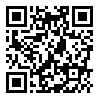BibTeX | RIS | EndNote | Medlars | ProCite | Reference Manager | RefWorks
Send citation to:
URL: http://jorar.ir/article-1-203-en.html
Background: Everyday, relief workers deal with a variety of stressors such as overload work, interpersonal conflicts, work shifts, mortality, lack of psychological support, conflict with managers and confusion in the face of their authorities. These factors can affect the relief workers (rescuer). Using coping strategies like stress, hardiness and the sense of effectiveness in dealing with activities and challenges can affect relief workers’ psychological health. This paper aims to study the relationship between coping strategies with stress, psychological hardiness and self-efficacy in relief workers in Red Crescent society of Kohgiluyeh & Boyer-Ahmad province.
Method: In this desc riptive and cross-sectional study, about 291 relief workers was selected and studied in Red Crescent society of Kohgiluyeh & Boyer Ahmad province by using stratified random sampling. Data was gathered through self-efficacy questionnaire (Schwarzer, Jerusalem 1979), coping strategies (Endler & Parker, 1990), and psychological hardiness in Personal Views Survey (Kobasa, 1990). In addition, data were analyzed by using SPSS19 software and Pearson’s coefficient statistical test. (P=0.01)
Findings: The results are as follows: dimensions of psychological hardiness consist of struggle, commitment and control with mean and standard deviation of 39 & 3.4, 37& 3.6, and 40.5 & 3 respectively; dimensions of coping strategies including problem-oriented, excitement-oriented and avoidance with mean and standard deviation 62 & 10.7; 59 &10.7 and60.3 & 10/1 respectively. About self-efficacy, the mean and standard deviation in relief workers were of 33 and 4. It must be said that the highest mean and standard deviation was seen in problem-oriented coping st yle (62 and 10/7). The findings showed that there was a significant relationship among psychological hardiness, coping strategies and self-efficacy in relief workers (p<0/01). Also, dimensions of hardiness (commitment and struggle) have a meaningful relationship with components of coping strategies (p<0/01).
Conclusion: According to the results, self-efficacy, hardiness and coping strategies can be developed; and organizations can play an important role in developing these features in relief workers.
| Rights and permissions | |
 |
This work is licensed under a Creative Commons Attribution-NonCommercial 4.0 International License. |





